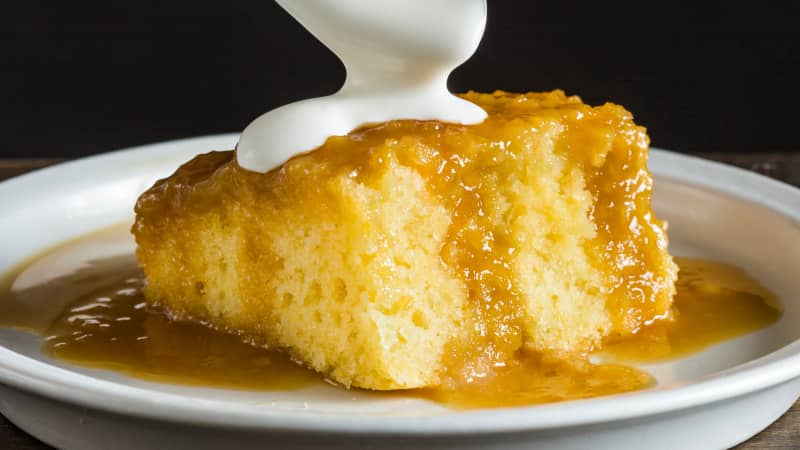My Goals and Discoveries
Separate layers
To keep the cake from absorbing the maple syrup mixture as it bakes, it needs both density and structure (provided by eggs and flour) and enough fat to "waterproof" the batter so it resists mixing with the syrup.
Coarse, rustic crumb
Instead of creaming together butter and sugar, which helps create a light, fine crumb, we use the quick-bread method, which calls for melted butter and creates a coarser crumb.
Tempered sweetness
For a dessert that’s not too sweet, we limit the sugar in the cake to 3 tablespoons and add a bit of salt to the sauce.
Contrasting textures
We bake the dessert in the upper half of a 375-degree oven to create a craggy caramelized layer to contrast the creamy sauce and moist cake.



